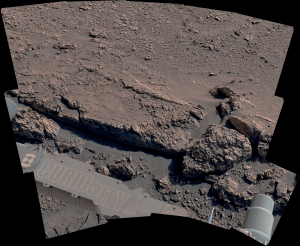Cassini Significant Event Report
For Week Ending 03/30/01
The most recent spacecraft telemetry was acquired from the Goldstone
tracking station on Wednesday, March 28. The Cassini spacecraft is in an
excellent state of health and is operating normally. The speed of the
spacecraft can be viewed on the
"Present Position"
web page.
The seventh in-flight Huygens Probe check-out (F7) successfully executed
this week. Cassini was at a distance of 880 million km with a
one-way-light-time delay of ~49 minutes. The checkout activities were supported
by the Huygens Flight Control Team at the European Space Agency Space Operations
Center (ESOC). A preliminary analysis of the received data indicates that
the Probe and on-board instruments performed well during F7 and that the
Huygens system is in good health. The Ultraviolet Imaging Spectrometer
(UVIS), Cassini Plasma Spectrometer (CAPS), Magnetospheric Imaging
Instrument (MIMI), Cosmic Dust Analyzer (CDA), Radio and Plasma Wave
Science (RPWS), Magnetometer Subsystem (MAG), Imaging Science Subsystem
(ISS), and the Visual and Infrared Mapping Spectrometer (VIMS) instruments
were powered off for the Probe Checkout. All returned to their normal
operating states within 24 hours of the completion of the checkout.
Instrument observations this week targeted Alpha Bootes, the Pleiades and
Fomalhaut. VIMS sequence C25 activities included the stellar observations
in support of better characterizing optical systems, refining the Narrow
Angle Camera boresight to VIMS boresight alignment, and assessing optical
contamination during the Jupiter flyby period. Data from Alpha Bootes
during the "slit-dither" observation is currently being processed.
Observations were also made of the Pleiades star cluster and the star
Fomalhaut. All three activities were done under reaction wheel control in
order to accurately position a star within the field of view. Instrument
Operations (IO) and the Multi Mission Image Processing Laboratory (MIPL)
have delivered 464 ISS and 470 VIMS products from the observation of Alpha
Bootes.
Commanding this week included update of the Command Loss Timer to 11 days
one second, part 1 of a CDA voltage adjustment to improve science return,
setting of the RPWS write protect bit, writing of the CCSDS header in the
housekeeping channel for CAPS, a high watermark clear, and uplink of the
Reaction Wheel Assembly (RWA) bias overlay.
IO and MIPL have processed all of the ISS Jupiter downlinks. Although
data gaps are still being pursued, the encounter produced 26,287 ISS
images (19,061 NAC and 7,226 WAC).
The new Cassini Media Calibration System at Deep Space Station-25 was used
in support of a live Cassini track for the first time. Training is in
process.
The Radio Science Subsystem (RSS) Team scheduled three days of testing in
preparation for the Gravitational Wave Experiment (GWE) System Test to be
performed at the beginning of May. On Friday (3/23), a test was performed
to characterize the best lock frequency of the Ka-band Translator (KaT).
The free running oscillator signal was seen but lock on the KaT was not
achieved. The original plan of acquiring data in the 3-link configuration
on Wednesday was altered so that lock could be attempted again. The
alternate plan utilized a series of discrete tones sent to the spacecraft
and a set of 5 sweeps over various regions of the spectrum. KaT lock was
still not achieved. Additional scenarios will be developed over the next
week and testing will resume shortly.
A Telemetry, Command & Data Management (TC&DM) Deep Space Mission Services
(DSMS) delivery review was held for version 26.1. This is a delta from
the V26.0 delivery and is primarily focused on capabilities in support of
the upcoming Cassini Radio Science GWE system tests. This includes
processing the new RSR data types, a new multi-mission Telemetry Delivery
and Storage (TDS) to store and retrieve radio science data, a new data
interface for radio science monopulse data, and a new Tracking Data
Delivery Subsystem for processing the Ka- band uplink exciter tracking
data.
Several science working groups met this week. The Atmosphere Working Group
continued work on development of an overall discipline strategy for the
Tour. The Rings Working Group (RWG) focused on prioritization of all team
observations. Substantial progress was made. The RWG is planning 2
telecons per week over the next couple of weeks to get their plans in
order in support of the Cross-Discipline Workshop to be held April 17-21.
Mission Planning presented a review of the Mission Plan Guidelines &
Constraints on solid state recorder usage at mission planning and science
forums this week.
Mission Assurance released the Cassini Risk Management Plan. The plan
documents the process Cassini will use to identify, assess, track and
manage risks to mission success during the Mission. The initial
Significant Risk List (SRL) is currently under development and will be
released shortly. The SRL is the basis for initiating the Risk Management
process for Cassini.
Outreach personnel presented a workshop, "From High Tech to Low Tech and
Back Again" at the TechEd'01 conference on technology in education in
Ontario, CA and participated in the NASA exhibit at the National Science
Teachers Association meeting in St. Louis.
Additional information about Cassini-Huygens is online at http://saturn.jpl.nasa.gov.
Cassini will begin orbiting Saturn on July 1, 2004, and release its piggybacked Huygens probe about six months later for descent through the thick atmosphere of the moon Titan. Cassini-Huygens is a cooperative mission of NASA, the European Space Agency and the Italian Space Agency. JPL, a division of the California Institute of Technology in Pasadena, manages the mission for NASA's Office of Space Science, Washington, D.C.
Media Relations Office
Jet Propulsion Laboratory
California Institute of
Technology
National Aeronautics and Space
Administration
Pasadena, Calif. 91109.
Telephone (818) 354-5011






























